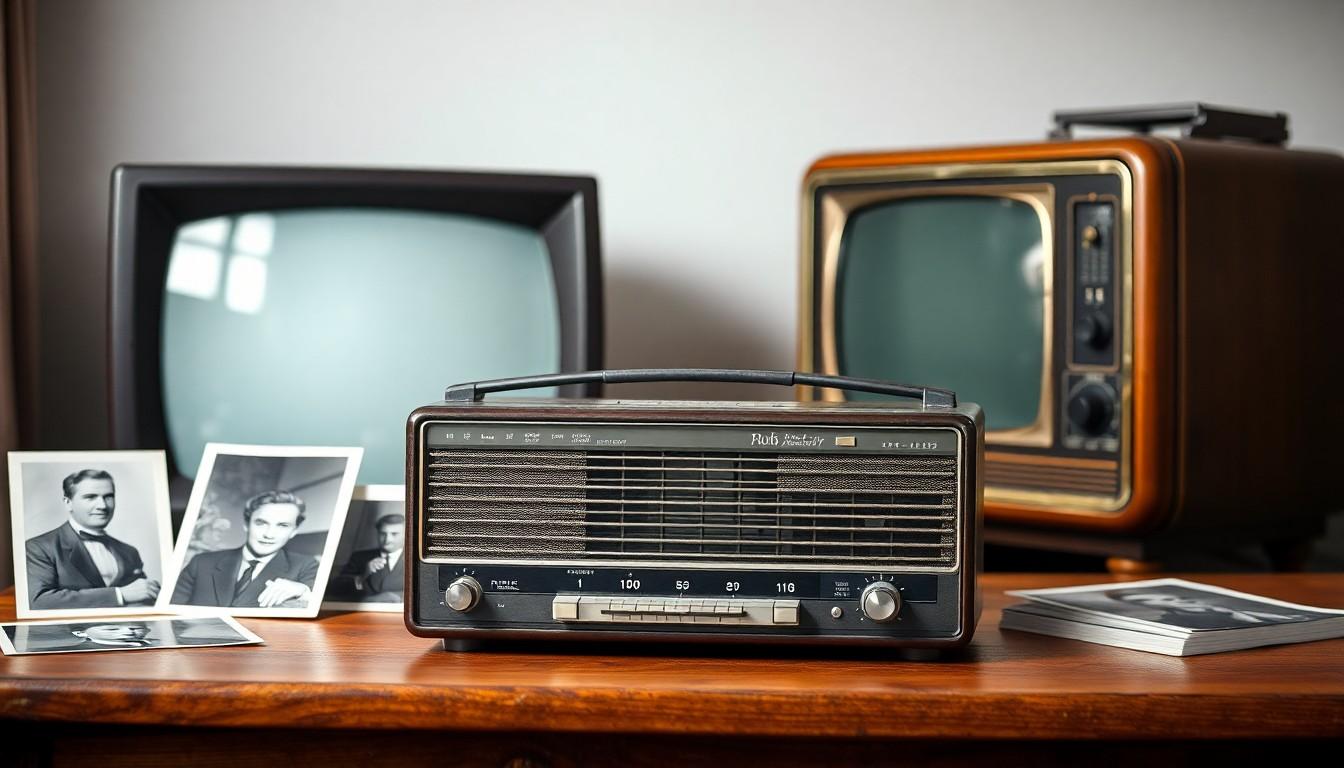Broadcast media is everywhere, and it’s not just about catching the latest news while sipping coffee. From the crackling sound of radio waves to the high-definition visuals of television, broadcast media shapes how information travels and entertains. Imagine a world without those catchy jingles or the thrill of live events—pretty dull, right?
Broadcast Media Examples
Broadcast media includes various formats used for disseminating information and entertainment to the public. Each type offers unique attributes that contribute to its effectiveness.
Television
Television serves as a primary source of information and entertainment for many households. It combines audio and visual elements to deliver news, dramas, sports, and reality shows in real-time. Viewers can enjoy various genres tailored to different interests, such as documentaries for educational purposes or soap operas for leisure. With both terrestrial and satellite options available, access remains widespread.
Radio
Radio provides an audio-only experience that appeals to diverse audiences. It plays an essential role in delivering news, music, and talk shows without the need for visuals. Listeners often enjoy programmed content, which can include live discussions or pre-recorded segments. Local and national stations allow for geographical diversity in programming, catering to specific interests.
Online Streaming Platforms
Online streaming platforms have revolutionized how people consume broadcast media. They offer on-demand access to a vast array of shows, movies, and live events, often without commercial interruptions. Services like Netflix and Hulu provide subscription-based models, while platforms like YouTube focus on user-generated content. Streaming allows viewers to engage with media anytime, enhancing their viewing experience through flexibility and variety.
Historical Overview Of Broadcast Media

Broadcast media has undergone transformative changes since its inception, significantly impacting communication and entertainment. Early innovations laid the groundwork for modern practices.
Early Developments
The journey of broadcast media began with the invention of the telegraph in the 1830s, enabling long-distance communication. Radio emerged as the first mass communication medium in the early 20th century, with Guglielmo Marconi achieving the first wireless transmission in 1895. By the 1920s, commercial radio stations started broadcasting to the public, offering news, music, and entertainment. The introduction of the Titanic disaster in 1912 underscored radio’s importance in emergency situations, illustrating its potential for timely information dissemination.
Evolution Over The Decades
Television debuted in the late 1920s, gaining popularity after World War II. The 1950s marked a significant boom in viewership, with families gathering around their sets for news and dramas. Throughout the 1960s and 1970s, broadcasts became central to cultural events, notably the moon landing in 1969, which attracted millions of viewers. The emergence of cable television in the 1980s expanded programming diversity, introducing niche channels catering to specific interests. With the rise of the internet in the late 1990s, streaming technology revolutionized media consumption, shifting audiences from scheduled programming to on-demand viewing options.
Popular Broadcast Media Examples
Broadcast media encompasses various formats that connect audiences with news and entertainment. The following highlights some key examples.
National Broadcasting Networks
National broadcasting networks play a significant role in reaching large audiences across the country. Major players include ABC, CBS, NBC, and FOX. These networks offer a variety of programming, including news shows, dramas, and reality TV, appealing to diverse interests. National coverage provides timely updates on current events and weather, making these networks essential for staying informed. High-profile events, like the Super Bowl, attract millions of viewers, showcasing the power of these platforms in shaping public discourse.
Local Broadcasting Stations
Local broadcasting stations serve specific communities, delivering news and programming relevant to regional audiences. Stations like WABC in New York or KABC in Los Angeles focus on local issues, weather reports, and community events. They often feature local talent in their news segments, fostering a connection with viewers. These stations also provide vital information during emergencies, such as severe weather alerts or public safety announcements. Community engagement through sponsorship of local events and charities reinforces their importance within the broadcasting landscape.
Internet-Based Broadcasts
Internet-based broadcasts revolutionize how audiences consume media. Platforms like Hulu, Netflix, and YouTube offer on-demand access to a vast array of content. The flexibility of streaming services allows users to watch their favorite shows at their convenience, free from traditional broadcasting schedules. Live streaming events, such as concerts or sports, further enhance viewer engagement by providing immediate access to diverse experiences. Internet-based broadcasts have created new opportunities for content creators, enabling niche programming that caters to specific audience interests.
Impact Of Broadcast Media On Society
Broadcast media significantly shapes society by delivering important information and influencing cultural norms. It plays a crucial role in keeping the public informed and connected.
Information Dissemination
Information disseminates rapidly through broadcast media, allowing immediate access to news. Television news programs and radio reports provide real-time updates on current events, such as natural disasters and political developments. Audiences rely on this immediacy for timely information that affects daily decisions. Social issues gain attention through broadcast documentaries and investigative journalism, driving public discourse. Such programs educate viewers on pressing matters, inspiring action and change. Additionally, public service announcements promote health and safety, impacting community well-being positively.
Cultural Influence
Cultural influence emerges through diverse programming found in broadcast media. Television shows and films reflect societal values and challenge norms, shaping public perceptions. Iconic series set trends in fashion and behavior, impacting demographics across age groups. Music broadcasted on radio highlights emerging artists, promoting genres that resonate with audiences. Events televised, such as award shows or cultural festivals, unite communities around shared experiences. Such moments enhance collective identity and foster understanding among different groups. Broadcast media effectively drives conversations on cultural diversity, representation, and acceptance in society.
Broadcast media remains an essential part of modern life. Its ability to inform entertain and connect people is unparalleled. With a rich history and continuous evolution it adapts to changing technologies and audience preferences.
From traditional radio and television to innovative streaming platforms broadcast media shapes cultural conversations and influences societal norms. As it continues to evolve it will undoubtedly play a crucial role in how information is consumed and shared in the future. The impact of broadcast media on daily life cannot be overstated as it keeps communities informed and engaged.
